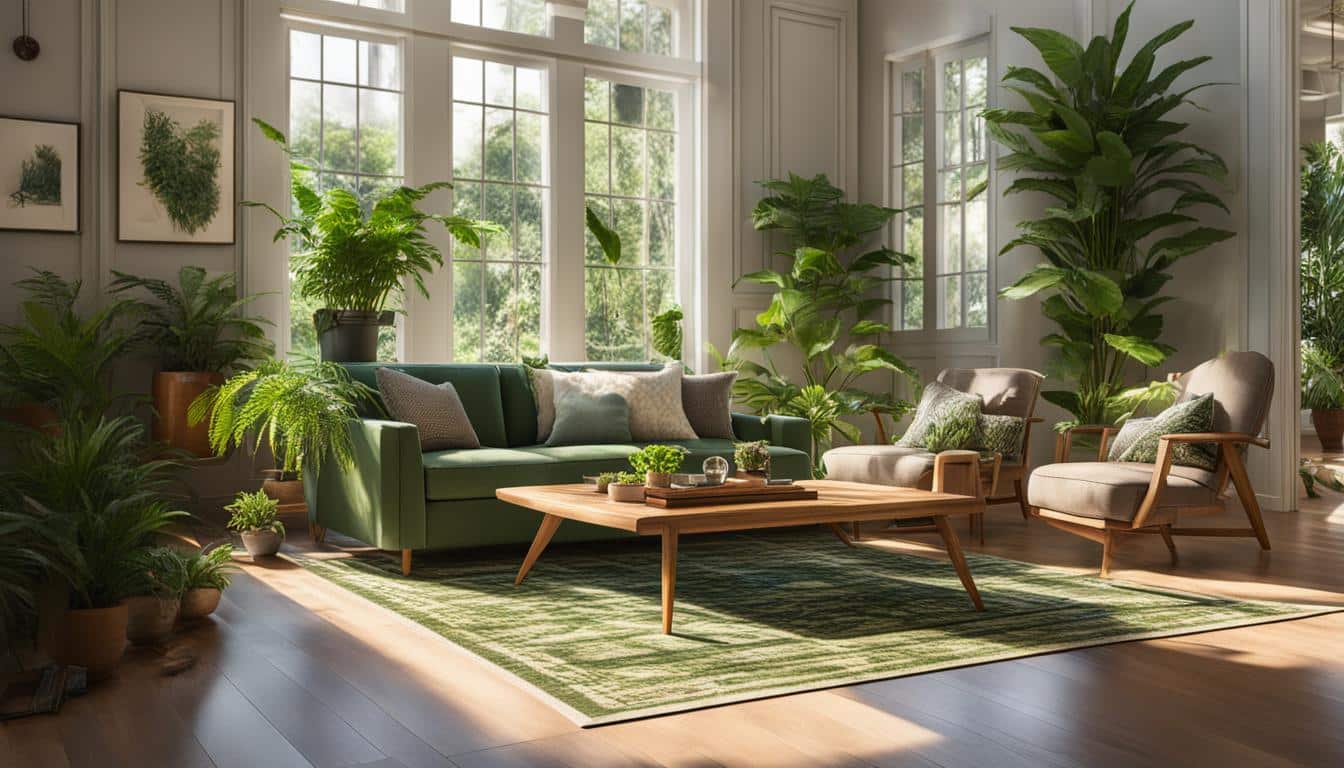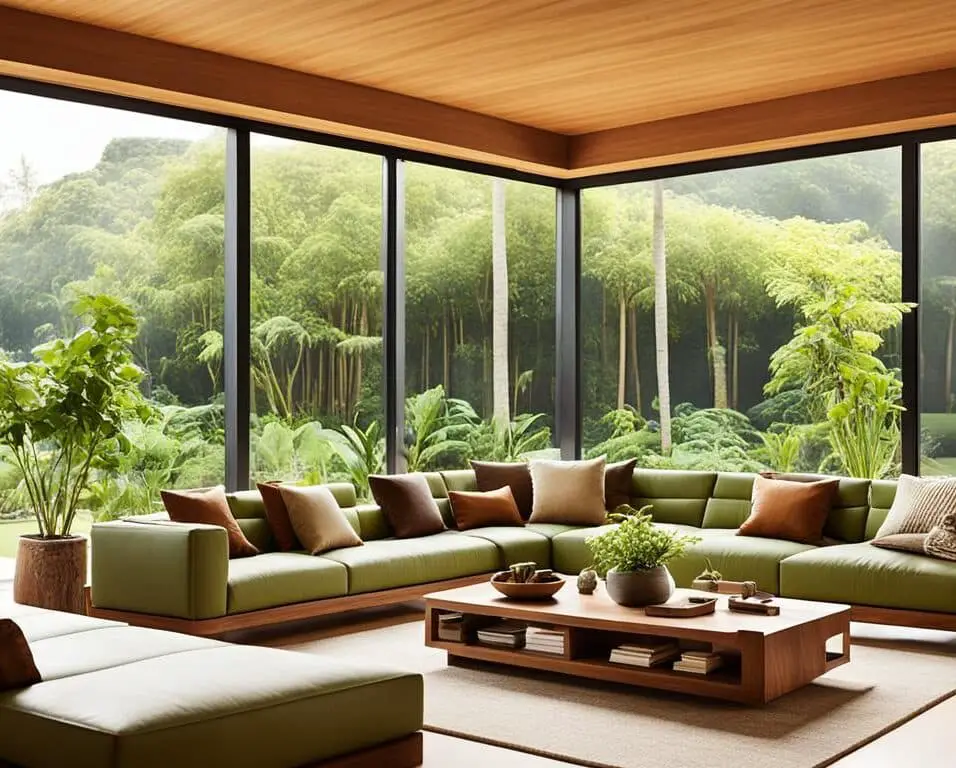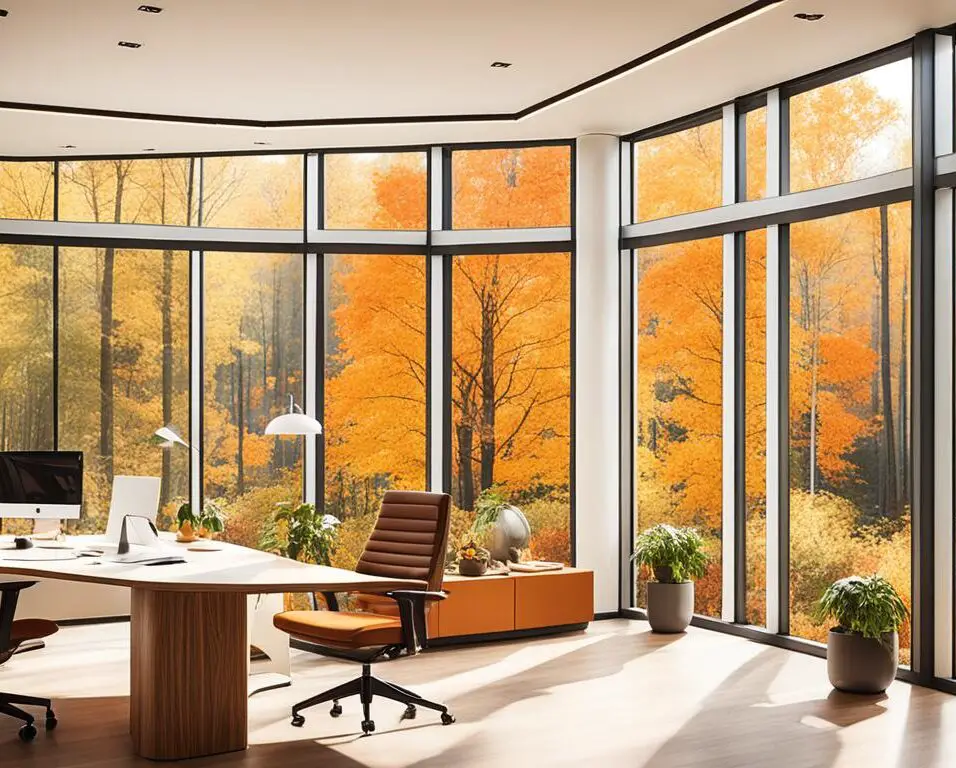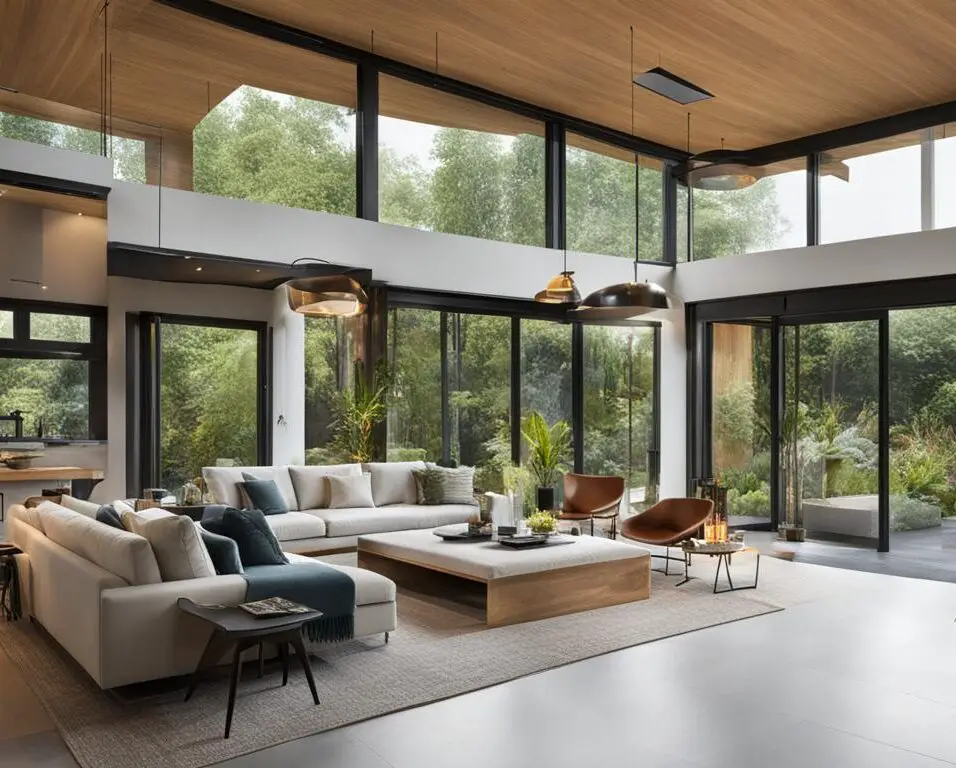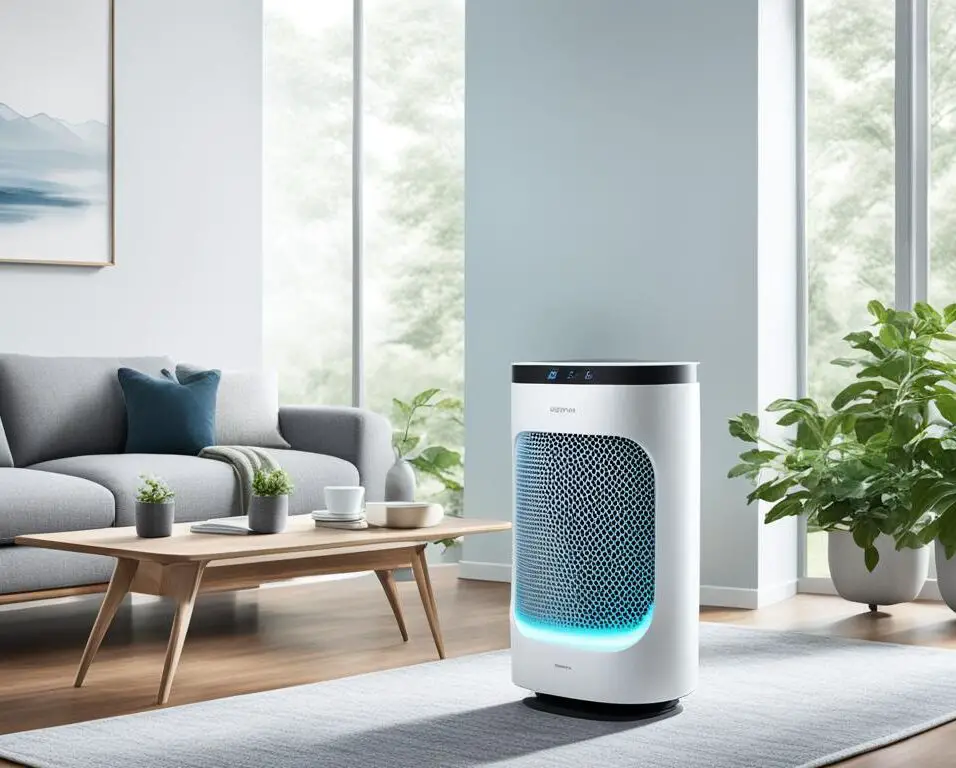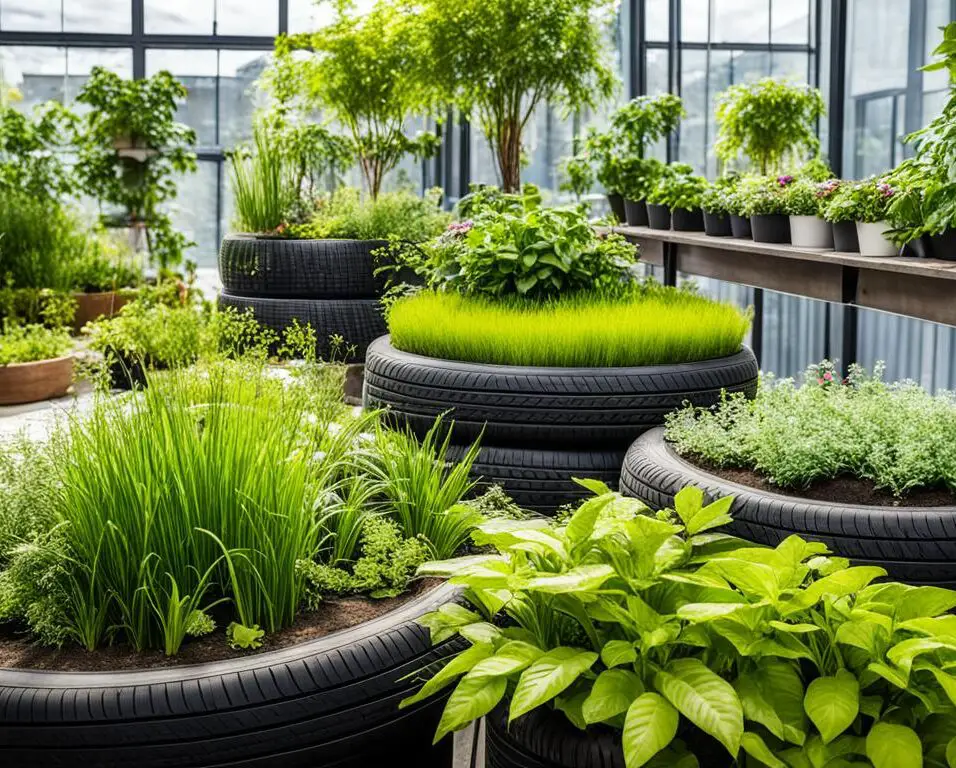Pets and Plants: Creating Biophilic Design for Pet-Friendly Homes
Biophilic design is a transformative approach that aims to bring nature into our indoor spaces, creating a harmonious and calming environment. It involves incorporating natural elements, such as plants, natural light, and organic materials, into the design of our homes. For pet owners, creating a biophilic design that is also pet-friendly can be a challenge. However, with the right strategies, it’s possible to create a space that benefits both humans and pets.
Key Takeaways:
- Biophilic design creates a harmonious indoor environment by incorporating natural elements.
- Pet-friendly biophilic design can benefit both humans and pets.
- Choose pet-friendly plants and materials when designing a pet-friendly biophilic home.
- Create designated pet areas and incorporate natural light and views of the outdoors for sensory stimulation.
- Maintain a pet-friendly biophilic home through regular cleaning and care for plants.
Benefits of Biophilic Design for Pets
Incorporating biophilic design into our homes not only benefits humans but also has a positive impact on our furry friends. Here are some key benefits of biophilic design for pets:
- Reduced stress and anxiety: Being in an environment that mimics nature helps pets feel more relaxed and at ease. The presence of plants, natural light, and organic materials can create a calming atmosphere.
- Promotes better sleep: Biophilic design can help improve sleep quality for pets. The soothing ambiance and connection to nature can create a restful environment for them to recharge.
- Improved overall well-being: Pets thrive in environments that prioritize their well-being. Biophilic design provides a sense of harmony and balance, enhancing their physical and mental health.
- Sense of security and privacy: The inclusion of plants in a pet-friendly biophilic design can create secluded areas and provide pets with a sense of security and privacy, which is essential for their emotional well-being.
- Encourages physical activity and mental stimulation: Biophilic design promotes an active lifestyle for pets. Natural elements, such as climbing structures and indoor gardens, can encourage physical exercise and mental stimulation.
“By integrating biophilic design principles into our pet-friendly homes, we can create a sanctuary where our furry companions can thrive and find comfort in a natural environment.” – Jane Anderson, Biophilic Design Expert
As the table below shows, biophilic design has numerous benefits for pets:
| Benefits of Biophilic Design for Pets | |
|---|---|
| Reduced stress and anxiety | Mimics a natural environment, promoting a sense of calmness. |
| Promotes better sleep | Creates a restful atmosphere for pets to recharge. |
| Improved overall well-being | Enhances physical and mental health through a harmonious environment. |
| Sense of security and privacy | Provides secluded areas for pets to feel safe and secure. |
| Encourages physical activity and mental stimulation | Promotes exercise and engages pets’ minds with natural elements. |
Design Strategies for Pet-Friendly Biophilic Homes
When creating a pet-friendly biophilic home, it’s essential to consider various design strategies that promote a harmonious living environment for both humans and pets. By incorporating biophilic elements and pet-friendly features, you can create a space that nurtures the well-being of all inhabitants.
Choosing Pet-Friendly Plants
One of the key design strategies for a pet-friendly biophilic home is selecting plants that are non-toxic and safe for your pets. Certain plant species, such as lilies and philodendrons, can be harmful or toxic to animals if ingested. Instead, opt for pet-friendly plants like spider plants, ferns, or orchids, which add greenery and a refreshing ambiance to your space without posing a risk to your furry friends.
Incorporating Pet-Friendly Materials
When designing a pet-friendly biophilic home, it’s crucial to choose materials that can withstand the activities and behaviors of your pets. Opt for durable flooring options such as laminate, tile, or hardwood, as these are easy to clean and resistant to scratches. Additionally, consider using scratch-resistant furniture materials such as microfiber or leather, which are more resilient to pet-related wear and tear.
Creating Designated Pet Areas
To ensure the comfort and happiness of your pets within a biophilic home, it’s beneficial to create dedicated pet areas. Designate a cozy corner with a comfortable pet bed, blankets, and toys where your pets can relax and unwind. This designated space will help establish a sense of belonging and security for your furry friends, promoting their overall well-being within the home environment.
Maximizing Natural Light and Views
Another design strategy for a pet-friendly biophilic home is to incorporate natural light and views of the outdoors. Pets, like humans, thrive when they can observe and interact with nature. Arrange furniture near windows to allow your pets to bask in the sunlight and gaze outside. Consider installing window perches or shelves to create elevated vantage points for your pets, allowing them to enjoy the benefits of natural light and the sights and sounds of the outdoors.
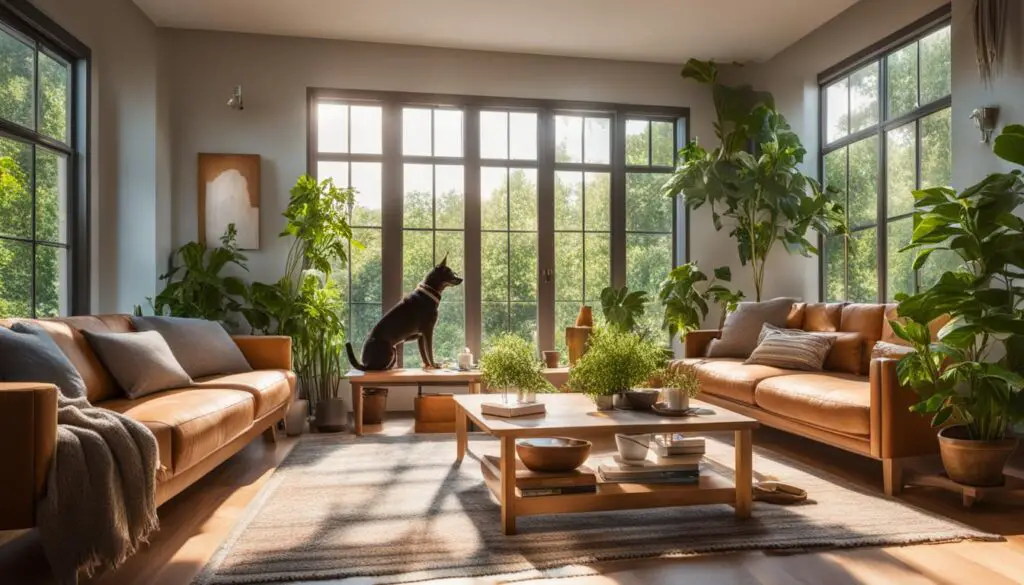
Designing with Safety in Mind
Ensuring the safety of your pets is paramount when designing a pet-friendly biophilic home. Avoid using toxic substances such as certain cleaning products, pesticides, or fertilizers that could harm your pets. When introducing new plants or materials into your home, research their pet-friendliness and consult with your veterinarian if needed. By prioritizing the safety of your pets, you can create an environment that nurtures their health and well-being.
By implementing these design strategies, you can create a pet-friendly biophilic home that promotes a harmonious relationship between nature, pets, and humans. Your home will become a sanctuary where both you and your furry friends can thrive, surrounded by the soothing benefits of biophilic design.
Maintaining a Pet-Friendly Biophilic Home
Creating a pet-friendly biophilic home requires continuous care and maintenance to ensure the well-being of both your pets and your plants. By establishing a routine and following a few simple guidelines, you can keep your home harmonious and thriving.
Caring for Your Plants
To maintain a healthy indoor garden, it’s essential to provide your plants with the proper care and attention they need. Here are some tips to keep in mind:
- Regular watering: Ensure your plants receive adequate water, but be cautious not to overwater. Check the moisture levels regularly and adjust accordingly to prevent root rot or dehydration.
- Pruning: Trim any dead or damaged leaves and branches to promote new growth and maintain the overall health of your plants.
- Light requirements: Understand the lighting needs of each plant and place them in areas where they can receive sufficient natural light or use artificial grow lights if necessary.
Cleaning and Pet-Friendly Practices
Maintaining a clean and safe environment for your pets and plants is crucial. Consider the following practices:
- Pet-friendly cleaning products: Use pet-safe cleaning solutions to avoid exposing your furry friends to harmful chemicals. Look for non-toxic, environmentally friendly options to keep your home clean and pet-friendly.
- Reducing pet hazards: Secure any loose wires or cords that may be tempting for your pets to chew on. Avoid storing toxic plants or products within reach of your pets.
- Indoor gardening methods: Opt for pet-friendly indoor gardening techniques, such as hydroponics or vertical gardens, to minimize the risk of pets damaging your plants.
Removing Pet Hair and Dander
Pets naturally shed hair and dander, which can accumulate in your home. Regular cleaning helps maintain a fresh and allergen-free environment:
- Vacuuming: Use a vacuum cleaner equipped with a pet hair attachment to effectively remove pet hair from furniture, carpets, and floors.
- Lint rollers: Keep lint rollers handy for quick and easy removal of pet hair from clothing and upholstery.
- Air purifiers: Consider using air purifiers with HEPA filters to capture and reduce pet dander and other airborne allergens.
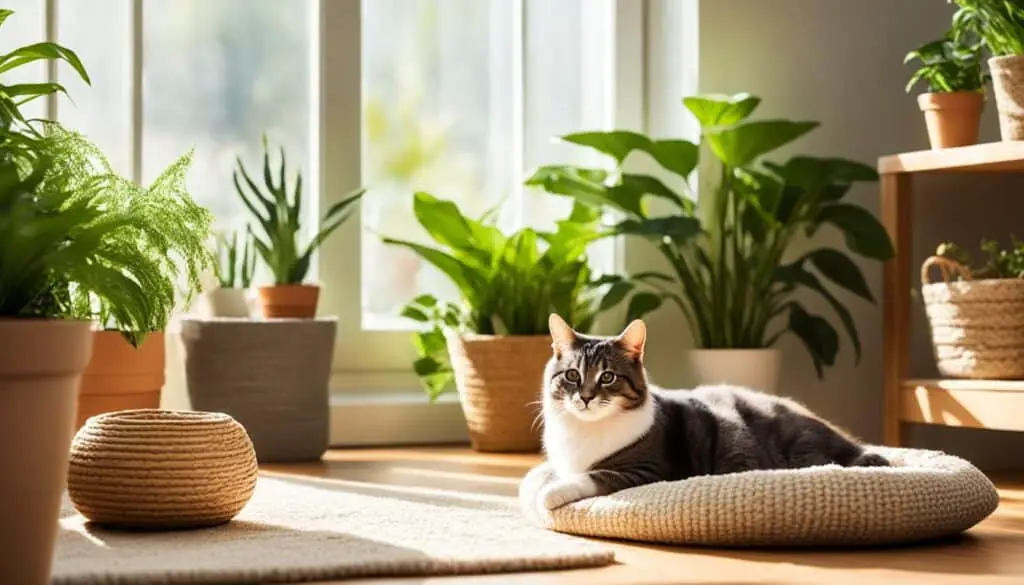
Stay Committed to a Pet-Friendly Biophilic Home
By following these maintenance practices, you can ensure that your pet-friendly biophilic home remains thriving and enjoyable for both you and your beloved pets. With a little effort and dedication, you can continue to reap the benefits of biophilic design while creating a safe and harmonious environment for your furry friends.
Conclusion
Creating a pet-friendly biophilic design for your home offers a remarkable opportunity to cultivate a soothing and harmonious environment that benefits both you and your beloved pets. By integrating natural elements and employing pet-friendly design strategies, you can establish a space that promotes the well-being and happiness of humans and animals alike.
Remember to consistently maintain and care for your plants, ensuring they receive adequate water and regular pruning to keep them thriving. Additionally, establish routines that prioritize the needs of your pets, such as designated play areas and cozy corners with pet beds and toys.
A pet-friendly biophilic design allows you to relish the beauty of nature while providing a safe and comfortable home for your furry friends. Embrace the transformative power of biophilic design to create an environment that fosters tranquility, connects you with nature, and enhances the bond between you and your pets.
FAQ
What is biophilic design?
Biophilic design is an approach that incorporates natural elements, such as plants, natural light, and organic materials, into indoor spaces to create a harmonious and calming environment.
How does biophilic design benefit pets?
Biophilic design can reduce stress and anxiety, promote better sleep, and improve overall well-being for pets. The presence of plants can also provide a sense of security and privacy.
What are some design strategies for creating a pet-friendly biophilic home?
Choose pet-friendly plants, incorporate durable flooring and scratch-resistant furniture, create designated pet areas, and include natural light and views of the outdoors for sensory stimulation.
How do I maintain a pet-friendly biophilic home?
Establish a routine for cleaning and caring for your plants, use pet-friendly cleaning products, consider pet-friendly indoor gardening methods, and regularly clean and vacuum your home to remove pet hair and dander.



